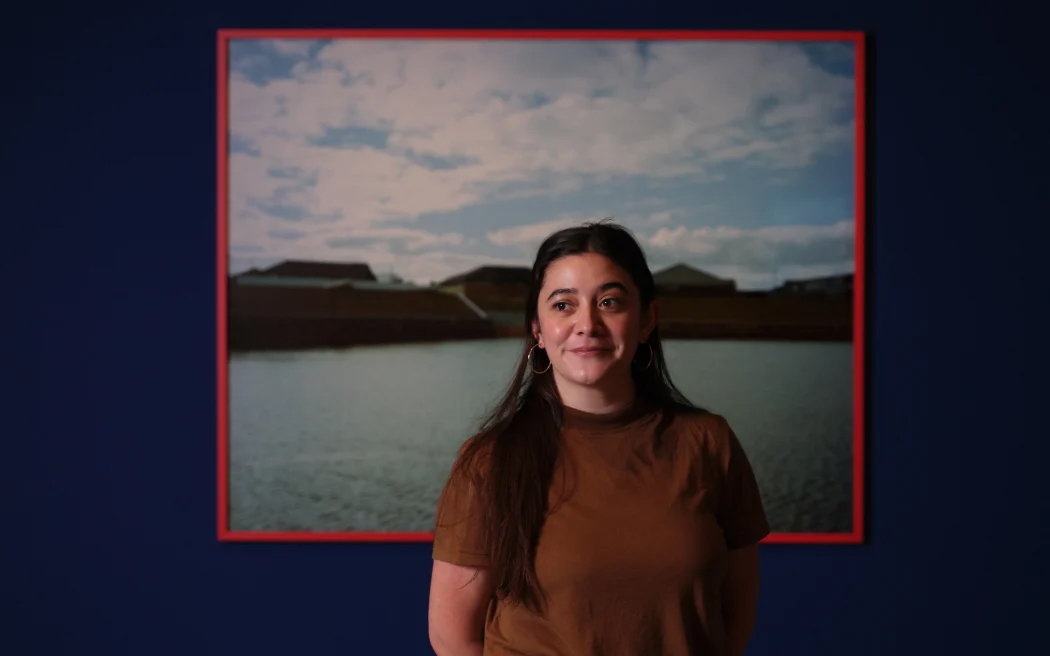What images are pinned to your studio wall?
This is maybe a bit cheesy but I have lots of family photos on my studio wall. I have a photo of my small self with my Nana and my Granddad’s brother after I was born. A photo of my granddad and I together taken at one of my many cousins’ 21st. Photographs of my namesake, my Nana’s grandma, and an awesome photo taken at my grandparents’ Ruby Wedding anniversary that includes my mum and her six sisters lined up behind Nana and Grandad. There’s also a mirror image to this photo with my seven Uncles.
What was the first artwork that made an impact on you?
‘Rain’ by Hone Tuwhare
What are you listening to?
I’m listening to podcasts. Before it was my darkroom listening, but now it has seeped into my all-the-time listening in lockdown. I love Taringa Podcast. During te marama o Mahuru they speak te reo Māori anake, that is a really hard challenge for me but I commit to it. I also listen to the podcast ‘Bad at Sports’ which talks about contemporary art, and ‘Revisionist History’ with Malcolm Gladwell, which is nice to do the cleaning to. But my true love in the podcast world is true crime shows.
What did you learn at art school?
I am still learning a lot at art school! I have one year left of a Doctorate of Fine Arts at Elam (Covid willing).
What are some of the biggest influences on your work?
My whakapapa. I am influenced both by the history of my tribes and by the history of my Pākehā settler ancestors. I enjoy learning about the divergent and convergent histories of my different iwi. My Nana was a Te Kapotai and Ngāti Kahu ki Torongare woman, as well as Ngātiwai and Ngāti Manu. She had many affiliations in the Tai Tokerau through her Cook, Reti and Waetford, Kingi whanau. My Granddad was Ngātiwai through his Ngāti Rehua mother my Pū Māma, they were also Te Whanau Whero. The strongest connections I grew up with were these Northern ones. But our name comes from my Pū Pāpa, my Granddad’s Dad, William Te Moananui. The name was transliterated over time to ‘Moore,’ but this is a Ngāti Pūkenga name from the Bay of Plenty. Our Ngāti Pūkenga kainga is actually on the Whangārei Harbour, it was a whenua tuku in the 1800s – so more recent. I love learning about the many connections through our whakapapa, that is my underlying impulse to make work. Even if that part of my research isn’t made public in my artwork, whakapapa is the biggest driver for me. This includes my Pākehā side as well, learning of the Pakehā settler history through my Dad’s family – what brought my Pākehā ancestors to Aotearoa and how their lives were shaped and how they shaped their lives once this place became home. I would like to make work addressing this more in the future.
What is art for?
Art is for many things. It is historian, entertainer, investigator, comic, critic, mediator, academic, and a translator. Art can have multiple motives, it shape-shifts and can take on various methods to suit different intentions. This is maybe a cause of frustration for neoliberal institutions. Because what art is, is as much about the process as the outcome, and this isn’t necessarily valued in an outcome-focused agenda. Often the modern rush to solutions means we haven’t figured out what the problems are that we are trying to solve. I think art is comfortable to sit with problems, comfortable to offer questions rather than answers.
September 2021.
Photo by Sam Hartnett
